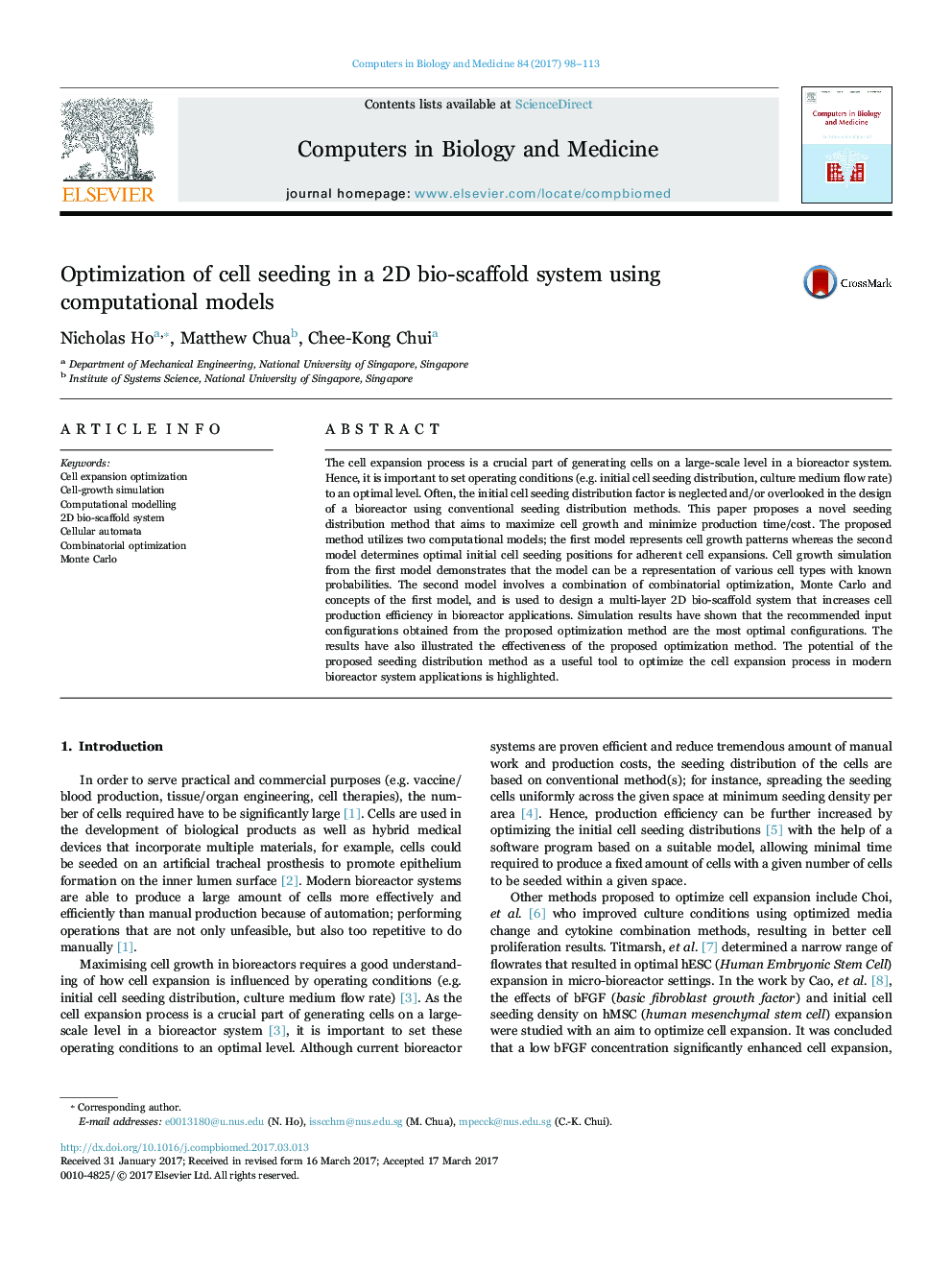| Article ID | Journal | Published Year | Pages | File Type |
|---|---|---|---|---|
| 4964945 | Computers in Biology and Medicine | 2017 | 16 Pages |
Abstract
The cell expansion process is a crucial part of generating cells on a large-scale level in a bioreactor system. Hence, it is important to set operating conditions (e.g. initial cell seeding distribution, culture medium flow rate) to an optimal level. Often, the initial cell seeding distribution factor is neglected and/or overlooked in the design of a bioreactor using conventional seeding distribution methods. This paper proposes a novel seeding distribution method that aims to maximize cell growth and minimize production time/cost. The proposed method utilizes two computational models; the first model represents cell growth patterns whereas the second model determines optimal initial cell seeding positions for adherent cell expansions. Cell growth simulation from the first model demonstrates that the model can be a representation of various cell types with known probabilities. The second model involves a combination of combinatorial optimization, Monte Carlo and concepts of the first model, and is used to design a multi-layer 2D bio-scaffold system that increases cell production efficiency in bioreactor applications. Simulation results have shown that the recommended input configurations obtained from the proposed optimization method are the most optimal configurations. The results have also illustrated the effectiveness of the proposed optimization method. The potential of the proposed seeding distribution method as a useful tool to optimize the cell expansion process in modern bioreactor system applications is highlighted.
Related Topics
Physical Sciences and Engineering
Computer Science
Computer Science Applications
Authors
Nicholas Ho, Matthew Chua, Chee-Kong Chui,
